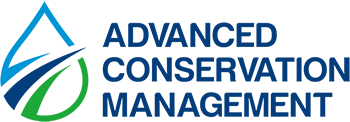Citizen’s Guide to Working with the California Water Boards
Introduction to the Guide
Welcome to the Water Boards
 The State Water Resources Control Board (State Water Board) and the nine Regional Water Quality Control Boards (Regional Water Boards), collectively known as the California Water Boards (Water Boards), are dedicated to a single vision: abundant clean water for human uses and environmental protection to sustain California’s future. Under the federal Clean Water Act (CWA) and the state’s pioneering Porter-Cologne Water Quality Control Act, the State and Regional Water Boards have regulatory responsibility for protecting the water quality of nearly 1.6 million acres of lakes, 1.3 million acres of bays and estuaries, 211,000 miles of rivers and streams, and about 1,100 miles of exquisite California coastline.
The State Water Resources Control Board (State Water Board) and the nine Regional Water Quality Control Boards (Regional Water Boards), collectively known as the California Water Boards (Water Boards), are dedicated to a single vision: abundant clean water for human uses and environmental protection to sustain California’s future. Under the federal Clean Water Act (CWA) and the state’s pioneering Porter-Cologne Water Quality Control Act, the State and Regional Water Boards have regulatory responsibility for protecting the water quality of nearly 1.6 million acres of lakes, 1.3 million acres of bays and estuaries, 211,000 miles of rivers and streams, and about 1,100 miles of exquisite California coastline.
The Guide provides an overview of the Water Boards and the many opportunities that all Californians have to participate with us in decisions and activities that affect the state’s water resources. While some of the public participation opportunities are formal, e.g., at a Water Board hearing, others are less formal, but just as important, e.g., a stakeholder process implemented by a Regional Board. Although the Guide doesn’t contain information about specific water quality decisions that are before the Boards, it will direct you where you can find that information. We look forward to updating this Guide periodically to assure its continuing usefulness to you, the public.
You Can Make a Difference – Get Involved!
The Water Boards are interested in hearing from you. The Guide contains many references to websites as well as weblinks to many sites. The Boards recognize that not all Californians have access to the internet. Thus, any member of the public may contact the Water Boards by telephone or US Mail to communicate concerns, ask questions, request information, or inquire about public participation opportunities.
About the California Water Boards
The Water Boards work to ensure the protection of water quality across a diverse range of topics, such as storm water, drinking water, wastewater treatment, water quality monitoring, wetlands protection, ocean protection, contaminated sites cleanup, low-impact development, and enforcement. Most recently, the Water Boards have been significantly involved in addressing both water quality and water rights issues related to the state’s continuing drought.
The State Board also provides financial assistance to local governments and non-profit agencies to help build or rejuvenate wastewater treatment plants, protect, restore and monitor water quality, wetlands, and estuaries and help underground storage tank owners and operators pay for the costs of cleaning up leaking underground storage tanks.
The State Board oversees the allocation of the state’s water resources to various entities and for diverse uses, from agricultural irrigation to hydro electrical power generation to municipal water supplies, to safeguarding the cleanliness of water for everything from bubble baths to trout streams to ocean beaches. The water rights program is administered to protect the public trust resources of the state and ensure that the public interest is served.
In order to protect water quality and allocate the rights to the use of California’s water, the Boards must balance competing demands on the state’s water resources, utilize the best available science, work with other agencies with intersecting responsibilities and be mindful of the impacts of its decisions on the public, including costs.
The State Board is located In Sacramento. There are nine Regional Water Boards, the boundaries of which are generally based on watersheds, also known as hydrologic areas. The nine Regional Water Boards are referred to by specific names, which are: (1) North Coast, (2) San Francisco Bay, (3) Central Coast, (4) Los Angeles, (5) Central Valley, (6) Lahontan, (7) Colorado River Basin, (8) Santa Ana, and (9) San Diego. Due to their size, and/or geographic spread, the Central Valley Board has three offices and the Lahontan Board has two offices. In addition, the Drinking Water Program has fourteen District offices spread throughout the state. Additional information, including maps and contact information is provided at page six and Appendix 14 of this Guide.
Together, the State Board and nine Regional Boards are referred to as the California Water Boards. The Water Boards are housed within state government and are part of the California Environmental Protection Agency (CalEPA). CalEPA consists of the Air Resources Board (ARB), the Department of Pesticide Regulation (DPR), the Department of Resources Recycling and Recovery, (CalRecycle), the Department of Toxic Substances Control (DTSC), the Office of Environmental Health Hazard Assessment (OEHHA), and the State Water Resources Control Board (SWRCB). See more at: http://www.calepa.ca.gov/About/
Download full version (PDF): Citizen’s Guide to Working with the California Water Boards
